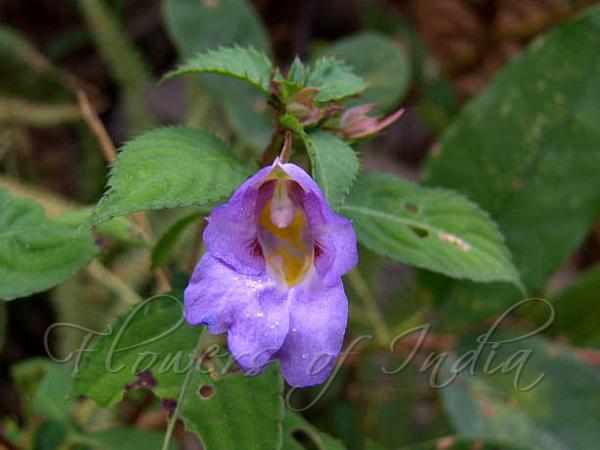|
| East Himalayan Balsam |
|

|

| File size | 45963 |
| Original date | 10/17/08 3:41 PM |
| Resolution | 612 x 459 |
| Flash | Flash did not fire, auto |
| Focal length | 7.4mm |
| Exposure time | 1/80s |
| Aperture | 2.8 |
| Focus Distance | |
| Metering Mode | Multi-segment |
| Camera make | Panasonic |
| Camera model | DMC-FZ50 |
| Sensor type |
|
|
|
|
Photo: |
Botanical name: Impatiens arguta Family: Balsaminaceae (Balsam family)
Synonyms: Impatiens gagei
Synonyms: Impatiens gagei
East Himalayan Balsam is a beautiful wildflower found in the forests,
thickets, grasslands in valleys, along canals and moist places, in East
Himalayas, from E. Nepal to NE India, at altitudes of 1800-3200 m. It is a
perennial plant, growing up to 70 cm tall. Erect stems are rigid and
branched. Alternately arranged leaves, carried on 1-4 cm long stalks, are
ovate or ovate-elliptic, 4-15 cm long, and 2-4.5 cm broad. Leaf margins
are sharply toothed, and the tip is pointed or tapering. Flowers arise
singly or doubly in leaf axils. Flower stalks are long, slender, often
with 2 bracts at base. Flowers are pink or purple-red, large or medium-
sized. Flowers are characterized by lower lobes of the lateral petals
being divided into two. Lateral sepals are 4 - outer 2, with tip long
cuspidate - inner 2, narrowly lanceshaped. Lower sepal is sac-like,
narrowed into an incurved, short spur. Upper petal is circular. Lateral
united petals are not clawed, 2-lobed. Basal lobes are broadly oblong;
Farther lobes are shaped like the head of an axe, large, with a two
parted tip. Flowering: July-October.
Medicinal uses: The flowers are used medicinally for dissolving
clots, promoting diuresis, and treating abdominal pain, postpartum blood
stasis, carbuncles, and difficulty in urination.
The flowers are used medicinally for dissolving
clots, promoting diuresis, and treating abdominal pain, postpartum blood
stasis, carbuncles, and difficulty in urination.
Medicinal uses:
 The flowers are used medicinally for dissolving
clots, promoting diuresis, and treating abdominal pain, postpartum blood
stasis, carbuncles, and difficulty in urination.
The flowers are used medicinally for dissolving
clots, promoting diuresis, and treating abdominal pain, postpartum blood
stasis, carbuncles, and difficulty in urination.| Identification credit: Kiran Srivastava | Photographed in Upper Dibang Valley, Arunachal Pradesh & Sikkim. |
• Is this flower misidentified? If yes,